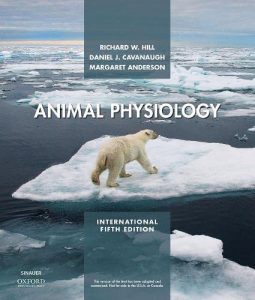Animal physiology
 AUTHOR Hill, Richard W.
AUTHOR Hill, Richard W.
CALL NO QT4 H647a 2023
IMPRINT New York : Oxford University Press, 2022
[For MU Students and Staff can request here]
Comprehensive, contemporary, and engaging, Animal Physiology provides evolutionary and ecological context to help students make connections across all levels of physiological scale.
New co-author, Daniel Cavanaugh (Loyola University Chicago), joins the team. All chapters on neurons and nervous systems provide updated content and pedagogy, including extensive reorganization and streamlining of chapters on neurons and synapses, enhanced coverage of sensory physiology and the vertebrate central nervous system, and updated discussion of the cellular-molecular mechanisms of circadian clocks.
Enhanced genomics and molecular content-including a new section on proteins as molecular machines-is incorporated while retaining focus on the whole animal and ecological relations.
Physiological implications of global change are discussed in new or expanded treatments of temperature, aridity, and environmental O2 availability and pH.
Revised and updated sections on muscle mechanics clarify how the organ-level properties of muscle such as length, contraction speed, and architecture influence organismal performance.
Electron transport and oxidative phosphorylation are presented with all-new artwork; content on endocrine environmental physiology is greatly enhanced; sections on altitude physiology are completely rewritten to reflect current progress; treatment of epigenetics is expanded, including epigenetic effects on the hypothalamus-pituitary-adrenal axis; metabolomic insights into hibernation are incorporated; tracheal breathing systems, open circulatory systems, diving by marine mammals, and comparative mammalian kidney architecture (and functional implications) are illustrated with new, cutting-edge images; evolution of osmoregulation is discussed with the latest insights from species with multiple freshwater colonization events.
All figures have been reviewed for pedagogical effectiveness and increased accessibility: more than 140 figures have been revised and over 50 new figures incorporated, plus greatly enhanced use of drawings and photos to familiarize readers with the animals under study.
New to the Fifth Edition and available on the Oxford Learning Link site, a curated list with links to over 130+ relevant and engaging videos to be used in lecture presentation.
Embracing opportunities for a “less is more” approach, hundreds of sentences and dozens of paragraphs have been improved for efficiency and effectiveness.
Word counts have been reduced by 5-10% in virtually all chapters to streamline presentation and permit a more open design format.
Enhanced ebook with Dynamic Animations and Figures, Learning Objectives, Self-Assessments, End-of-Chapter Assignable Quizzes, Flashcards, Box Extensions, and Additional References




